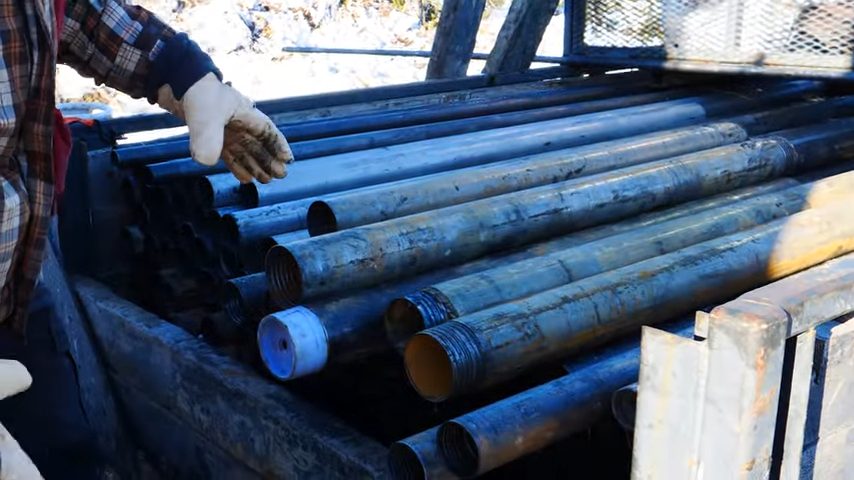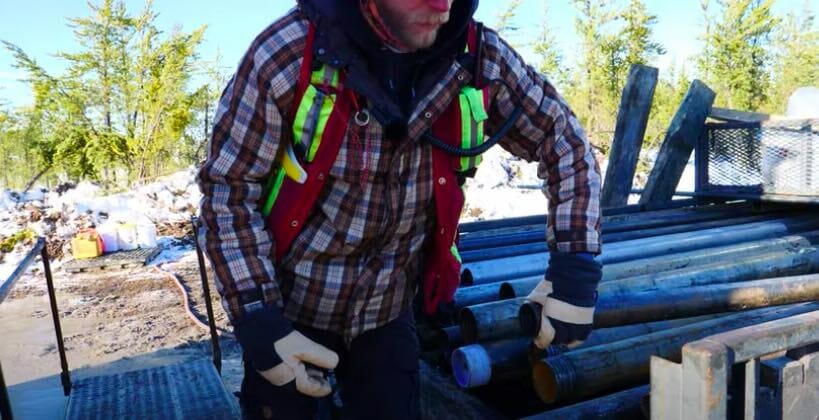What is a Drill Rod?

Drill rods can be used to make a variety of tools. Drill rods are distinguished by their toughness, durability, temperature resistance, and applications. Being a contractor, I need to utilize drill rods for various purposes. In this guide, I’ll help you understand them well.
Quick Summary: A drill rod is a longer piece of easy-to-mold tool steel that can be employed in machining to create various tools and parts. Drill rods are typically round, but there are a few square ones. They are typically soft enough to machine into their final forms.
I will go into more detail below.
What are Drill Rods?

Frankly speaking, a drill rod is a longer piece of easy-to-mold tool steel that can be employed in machining to create various tools and parts.
Drill rods are typically round, but there are a few square ones. They are typically soft enough to machine into their final forms.
The surface of drill rods must be clean and smooth. We usually use precision grinding to make them this way.
Drill Rod — Uses
Drill rods have a wide range of applications. Manufacturers use them to make drilling bits, dowel pins, cutting tools, punches, taps, hammers, files, reamers, shafts, hot-work tools, etc.
Different drill rod grades are best suited for specific applications. Let’s study a few examples:
- W1 is appropriate for cold-work tools, hand-held tools, punches, dies, cutting tools, etc.
- O1 is the best grade for punches, dies, and gages.
- A2 and D2 may be used for hobs, knurls, coining dies, rolls, punches, dies, and other similar applications.
- The S7 grade is ideal for knock-out pins, drift pins, grippers, track tools, stamps, river sets, mandrels, and other similar applications.
- H13 (or V44) is ideal for hot-work tools, die-casting tools, core pins, plastic molds, ejector pins, and other applications.
How is a Drill Rod Made?
Drill Rod Manufacturing Processes:
There are two types of drill rod manufacturing processes: water-hardening and oil-hardening processes.
To make a drill rod, the tool steel is heated until it turns a bright red color. It must be cooled once it has turned red to harden and retain its shape. This can be accomplished by dipping the drill rod in water or warm oil. Let’s look at the differences between the two processes.
Manufacturing of Water-hardened Drill Rods
Water-hardened drill rods are precisely what they sound like: drill rods that have been hardened by immersing them in water. Initially, the tool steel is heated until it turns a bright red color. Then it’s dropped into a pool of water to cool and harden.
Water-hardened drill rods have a low alloy content, making them ideal for machining. but they are not tough enough for welding. Water-hardened drill rods are ideal for those looking for inexpensive but highly machinable parts and tools.
Manufacturing of Oil-hardened Drill Rods
An oil-hardening manufacturing process involves heat-treated steel being immersed in warm oil to cool.
Oil-hardened drill rods contain more alloy, making them suitable for both machining and welding. Oil-hardened rods have a much higher strength and stiffness rating on the scale. They are more resilient and resistant to extreme temperatures due to their toughness.
How Hard is a Drill Rod?
The hardness of drill rods is determined by the steel used to make them. The hardness of a material can be determined and communicated using two different scales:
Tool steels should have a hardness ranging from 207 to 341 on the Brinell Hardness scale. Rockwell measurements say the same materials must be between 96 and 110Rb.
A drill rod’s machinability is closely related to its hardness. The machinability power of various grades of tool steel varies.
Can One Weld Drill Rod?
True statement, drill rods can be welded. However, keep in mind that the heat treatment (welding process) will temper and toughen the tool steel. As a result, the material will become more difficult to work with or manipulate.
Always use best welding practices to avert producing a material that is too difficult to handle.
Do Drill Rods Come Heat-Treated?
Yes. Drill rods are deemed soft in their raw states to facilitate easy machining. They (drill rods) can be heat-treated before being drawn to their desired hardness levels.
Take a look at some of our related articles below.
- How to test pool water for electricity
- What is the best drill bit for porcelain tile
- What is a step drill bit used for
Video Reference
Standard Uranium
